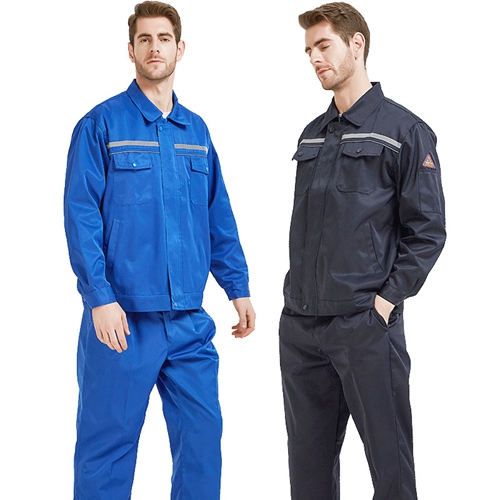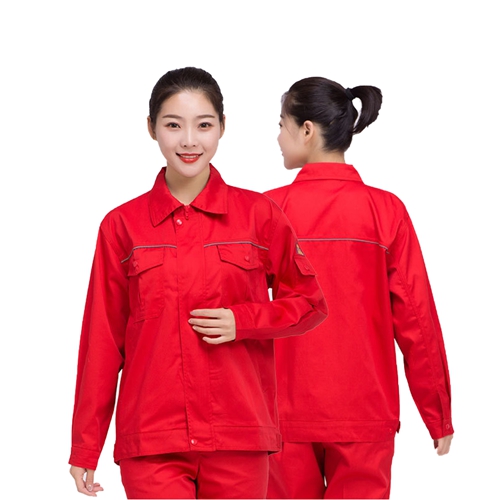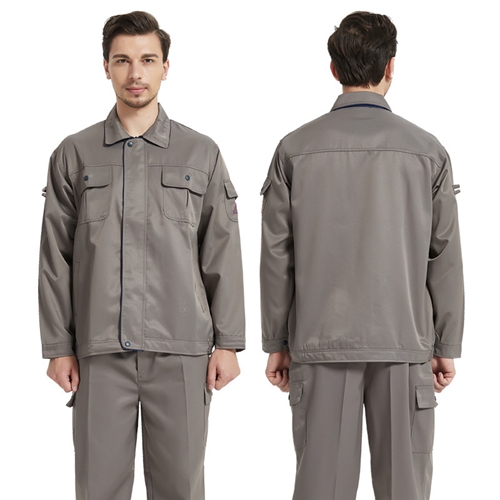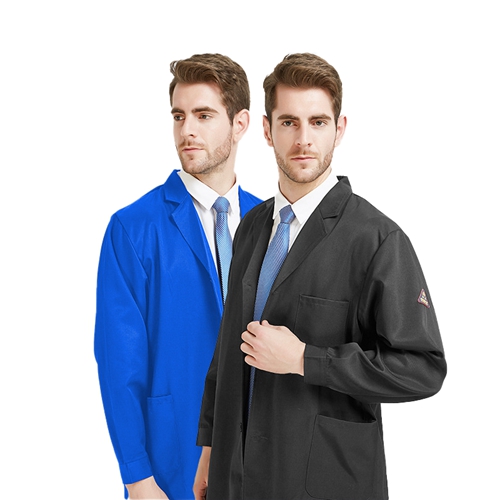CE Working Clothing: Safety Apparel, OEM, & Custom Printing
The Imperative of High-Performance CE Working Clothing in Modern Industry
In the rapidly evolving landscape of industrial operations, the safety and efficiency of personnel are paramount. This is where CE working clothing emerges as a critical component of personal protective equipment (PPE). CE marking signifies conformity with European health, safety, and environmental protection standards, ensuring that garments provide a certified level of protection against specific workplace hazards. For B2B decision-makers and procurement engineers, understanding the intricacies of these garments—from material science to manufacturing precision—is essential for safeguarding their workforce and complying with stringent regulatory frameworks. These specialized garments are not merely uniforms; they are engineered barriers designed to mitigate risks in demanding environments, contributing directly to operational continuity and employee well-being.

The demand for sophisticated ce working clothing continues to grow across sectors, driven by increasingly complex industrial processes and a heightened global focus on occupational safety. This article delves into the technical aspects, application scenarios, and strategic advantages of investing in high-quality, certified protective workwear.
Current Trends in Professional Working Clothing Technology
The landscape of professional workwear is undergoing significant transformation, driven by innovation in material science, ergonomic design, and digital integration. Key trends include:
- Smart Textiles Integration: Incorporating sensors for vital signs monitoring, GPS tracking, and environmental hazard detection directly into garments, enhancing real-time safety and data analytics for personnel in high-risk zones.
- Sustainable and Eco-Friendly Materials: A growing emphasis on recycled fabrics, organic cotton, and closed-loop manufacturing processes to reduce environmental impact without compromising protective qualities.
- Advanced Ergonomics and Comfort: Designing garments that prioritize wearer comfort and freedom of movement, reducing fatigue and improving compliance. This includes stretch fabrics, articulated designs, and optimized weight distribution.
- Customization and Personalization: The rise of oem safety clothing solutions, offering bespoke designs, corporate branding through printing and embroidery, and tailored fits for diverse workforces. This trend addresses specific operational needs and strengthens brand identity for companies that require safety clothing with printing.
- Enhanced Durability and Longevity: Innovations in fabric weaves and treatments that extend garment service life, reducing replacement costs and waste. This is crucial for environments demanding robust solutions, such as working clothing construction sites.

These trends underscore a move towards more intelligent, sustainable, and user-centric ce working clothing, reflecting a holistic approach to occupational safety and efficiency.
The Rigorous Manufacturing Process of CE Working Clothing
The production of certified ce working clothing is a multi-stage, precision-driven process that marries advanced textile engineering with stringent quality control. It's designed to ensure every garment meets the exacting standards required for occupational safety.
I. Design and Material Selection: The Foundation of Protection
The process begins with meticulous design, often informed by hazard assessments and industry-specific requirements (e.g., EN ISO 11612 for flame resistance, EN ISO 20471 for high visibility). Material selection is critical: fabrics such as flame-retardant treated cotton, aramid blends (Nomex, Kevlar), high-performance polyesters, and waterproof/breathable membranes (e.g., PTFE derivatives) are chosen for their intrinsic protective properties. Components like reflective tapes (often 3M Scotchlite), industrial-grade zippers (YKK), and reinforced stitching threads are specified to meet or exceed durability and functional benchmarks. Each material undergoes rigorous pre-production testing for tensile strength, tear resistance, colorfastness, and chemical resistance.
II. Precision Cutting and Assembly: Engineered for Performance
- CAD/CAM Patterning: Digital pattern creation using Computer-Aided Design (CAD) software ensures optimal fabric utilization and precise component dimensions. These patterns are then transferred to Computer-Aided Manufacturing (CAM) systems for automated cutting.
- Automated Fabric Cutting: High-precision CNC cutting machines (e.g., Gerber, Lectra) execute intricate patterns with minimal material waste and unparalleled accuracy, crucial for maintaining garment integrity and CE compliance. While not "casting" or "forging" in the traditional sense, this represents the high-tech, precision engineering equivalent for textiles.
- Specialized Stitching and Seam Sealing: Garments are assembled by skilled operators using industrial sewing machines capable of various stitch types (lockstitch, chain stitch, overlock) to ensure structural integrity. For waterproof or chemical-resistant garments, seams are often taped or ultrasonically welded to prevent ingress, a process vital for maintaining protective barriers.
- Component Integration: Pockets, reflective strips, zippers, and reinforcement patches are strategically integrated to enhance functionality and durability, following precise technical drawings.

III. Personalization and Branding: OEM Printing & Embroidery
For oem printing embroidery personalized working clothes, this stage is crucial. Advanced techniques such as industrial embroidery (multi-head machines for intricate logos), screen printing, and heat transfer printing are employed to apply company branding, employee names, or specific warnings. These processes are carefully managed to ensure the personalization does not compromise the garment's protective properties, especially for FR or high-visibility items. The durability of the branding itself is also tested to withstand industrial laundering cycles.
IV. Quality Control and Certification: Assuring Compliance
Each batch of ce working clothing undergoes rigorous testing:
- In-process Inspections: Checks at every stage—fabric receipt, cutting, sewing—to identify and rectify defects early.
- Final Product Testing: Garments are subjected to performance tests relevant to their CE standards. This includes flame propagation tests (EN ISO 15025), hydrostatic head tests for waterproofing (EN 343), retroreflection measurements for high visibility (EN ISO 20471), and abrasion resistance tests (EN 530).
- Compliance Audits: Regular audits by notified bodies ensure adherence to relevant ISO and EN standards (e.g., ISO 9001 for quality management, ISO 14001 for environmental management). The final CE marking provides clear evidence of compliance with European directives.
This comprehensive process ensures that every garment delivered is not only functional but also a certified safety asset, offering extended service life under demanding industrial conditions.
Technical Specifications and Performance Parameters
Understanding the precise technical specifications of ce working clothing is vital for selecting the appropriate PPE for specific hazards. Below is a representative table outlining typical parameters for a high-performance CE-certified protective garment, such as an Arc Flash & Flame Retardant Work Jacket.
| Parameter | Specification/Standard | Description/Performance |
|---|---|---|
| Primary Fabric Composition | 60% Modacrylic, 38% Cotton, 2% Antistatic Fibres | Inherently flame retardant, breathable, antistatic properties. |
| Fabric Weight | 300 gsm (grams per square meter) | Optimal balance of protection and comfort for all-season use. |
| CE Certification | EN ISO 11612 (A1, A2, B1, C1, F1) | Protection against heat and flame. |
| Arc Flash Protection | IEC 61482-2 Class 1 (4 kA), ATPV 8.5 cal/cm² (HRC 2) | Protection against thermal hazards of an electric arc. |
| Antistatic Properties | EN 1149-5 | Protective clothing with electrostatic properties. |
| High Visibility | EN ISO 20471 Class 3 (if applicable) | Ensures visibility in hazardous environments (e.g., traffic, machinery). |
| Tensile Strength (Warp/Weft) | > 500 N / > 400 N (ISO 13934-1) | Resistance to tearing under tension. |
| Tear Resistance (Warp/Weft) | > 25 N / > 20 N (ISO 13937-2) | Resistance to propagation of tears. |
| Colorfastness to Washing | Grade 4-5 (ISO 105 C06) | Maintains aesthetic and high-visibility properties after repeated laundering. |
| Service Life Expectancy | Typically 2-3 years or 50 industrial washes | Dependent on usage intensity and maintenance. |

These detailed parameters ensure that the protective capabilities of the garment are quantified and verified, providing confidence to employers and wearers alike. It highlights the engineering precision behind each piece of ce working clothing.
Diverse Application Scenarios and Sector-Specific Solutions
The utility of specialized ce working clothing spans a multitude of industries, each presenting unique hazards requiring tailored protective solutions. The garments are designed to provide both primary protection and enhanced operational efficiency.
- Petrochemical and Oil & Gas: Workers in these sectors face risks from flash fire, arc flash, chemical splashes, and static electricity. Flame-retardant (FR) and antistatic clothing (EN ISO 11612, EN 1149-5, IEC 61482-2) is indispensable, offering critical protection that can be life-saving. The inherent corrosion resistance of certain fabric treatments also indirectly supports equipment longevity by preventing chemical degradation of the clothing itself.
- Metallurgy and Foundry Operations: Extreme heat, molten metal splashes, and radiant heat are prevalent. Garments conforming to EN ISO 11612 with high levels of A, B, C, D, E, F classifications (e.g., for radiant heat and molten splash) are crucial. These materials are engineered to resist heat transfer, protecting skin from severe burns.
- Construction and Infrastructure: High visibility is paramount on construction sites, especially where heavy machinery operates. EN ISO 20471 certified high-visibility working clothing construction ensures workers are seen in all light conditions. Additionally, robust, abrasion-resistant fabrics protect against cuts, scrapes, and punctures, while incorporating elements like reinforced knee pads. This includes personnel who may also require a woodworking safety helmet for head protection.
- Water Supply & Drainage / Utilities: Workers often operate in wet, confined spaces or near traffic. Waterproof and breathable garments (EN 343) protect against environmental elements, while high-visibility elements maintain safety. Durable materials resist tears and abrasions from rough environments, minimizing the need for frequent replacement, which translates to cost-saving.
- Manufacturing and Logistics: General industrial workwear often focuses on durability, comfort, and company branding. OEM safety clothing with personalized branding through embroidery or printing is common. For distribution hubs and outdoor logistics, high-visibility options are often combined with features for comfort and mobility.
- Mining and Tunnelling: In these demanding sectors, garments require superior abrasion resistance, tear strength, and often high visibility for underground conditions. Special treatments for moisture management and anti-microbial properties might also be included due to confined and humid environments.

The availability of specialized safety clothing shops in Bloemfontein, for example, indicates a localized demand for readily accessible, compliant PPE solutions, emphasizing the importance of regional distribution and supply chain efficiency.
Technical Advantages of High-Performance CE Working Clothing
Investing in premium, CE-certified workwear offers a cascade of technical and operational advantages beyond mere compliance:
- Enhanced Worker Safety & Morale: Direct reduction in injury severity and frequency, leading to fewer lost workdays, lower medical costs, and improved employee morale, knowing they are adequately protected.
- Regulatory Compliance & Risk Mitigation: Ensures adherence to national and international safety standards (e.g., European PPE Directive), mitigating legal risks and avoiding costly fines associated with non-compliance.
- Superior Durability & Cost-Effectiveness: High-quality fabrics and construction techniques mean garments withstand harsh industrial conditions, repeated laundering, and extensive wear, leading to a significantly longer service life compared to standard workwear. This results in reduced procurement frequency and lower long-term costs.
- Improved Productivity & Comfort: Ergonomically designed ce working clothing, often featuring stretch panels, breathable membranes, and moisture-wicking properties, enhances comfort. This reduces worker fatigue, allowing for greater focus and productivity throughout shifts.
- Specialized Protection: Offers specific, measurable protection against hazards like flame, arc flash, chemical splashes, extreme temperatures, and poor visibility, tailored to the operational risk profile. The material’s ability to resist degradation in corrosive environments contributes to the garment's integrity, ensuring consistent protection.
- Brand Professionalism: Consistent, high-quality branded workwear (especially with oem printing embroidery personalized working clothes) projects a professional image, reinforcing company values of safety and quality to clients and the public.

These advantages collectively underscore the strategic value of procuring CE-certified workwear as a fundamental investment in operational excellence and workforce protection.
Vendor Comparison: Selecting the Right OEM Partner for CE Working Clothing
Choosing an OEM partner for ce working clothing is a strategic decision that impacts safety, budget, and brand reputation. A thorough comparison requires evaluating several critical factors. Below is a hypothetical comparison table for three OEM providers focusing on industrial safety workwear.
| Feature/Criterion | Vendor A (GlobalPro PPE) | Vendor B (SafeWear Solutions) | Vendor C (ApexGuard) |
|---|---|---|---|
| Primary Certifications | EN ISO 11612, IEC 61482-2, EN ISO 20471, ISO 9001:2015 | EN ISO 11612, EN 343, OEKO-TEX Standard 100 | EN ISO 20471, EN 342, EN 388 (for gloves/reinforcements) |
| Customization Options | Full OEM design, extensive fabric choices, printing/embroidery | Standard models with logo printing/embroidery, limited fabric options | Modular components, bespoke sizing, branding |
| Minimum Order Quantity (MOQ) | 200 units per design | 50 units per design | 150 units per design |
| Typical Lead Time (OEM) | 8-12 weeks | 6-10 weeks | 10-14 weeks |
| Material Quality/Innovation | Proprietary blends, advanced technical fabrics, R&D focused | Standard industry fabrics, proven durability | Focus on specific hazard protection (e.g., cut resistance, thermal) |
| After-Sales Support | Dedicated account manager, garment repair services, training | Standard customer service, replacement parts | Technical consultations, warranty management |
| Geographic Reach | Global distribution, multiple regional offices (e.g., strong in Europe, North America) | Regional focus (e.g., Southern Africa, including safety clothing Bloemfontein) | Emerging markets focus, project-based delivery |

This comparison highlights the need to align vendor capabilities with specific organizational needs, from material innovation to regional service points like safety clothing shops in Bloemfontein.
Customized Solutions: Tailoring Safety and Brand Identity
Beyond off-the-shelf products, the ability to procure oem printing embroidery personalized working clothes provides distinct advantages for organizations seeking to optimize both safety and brand visibility. Customization extends beyond merely adding a logo; it involves tailoring every aspect of the garment to specific operational requirements and corporate branding guidelines.
- Design Flexibility: Full OEM services allow for bespoke garment designs, adjusting pocket configurations, closure systems, ventilation zones, and reinforcement points to perfectly suit the tasks performed by the wearer. This ensures maximum functionality and comfort, which directly impacts worker adoption and adherence to PPE policies.
- Material Optimization: Custom solutions enable the selection of precise fabric blends and treatments. For example, a company operating in both high-heat and high-moisture environments might specify a unique FR fabric that also offers advanced moisture-wicking and quick-dry properties, a combination not typically found in standard offerings.
- Branding Integration: Professional embroidery and printing services ensure that company logos, department identifiers, or individual names are integrated seamlessly and durably. This is not just for aesthetics; clear branding can aid in personnel identification on large sites and reinforce a culture of safety. The choice of printing technique (screen print, heat transfer, embroidery) can be optimized for garment type, wash cycles, and desired visual impact.
- Sizing and Fit: OEM partners can often provide a wider range of sizes or even bespoke measurement services to ensure a perfect fit for every employee, crucial for comfort and preventing entanglement hazards.
- Standard Compliance Assurance: A reputable OEM specializing in ce working clothing will ensure that any customization, especially regarding material changes or additions, does not compromise the garment’s CE certification or its protective performance.

Leveraging customized solutions transforms workwear from a generic necessity into a strategic asset that enhances safety, comfort, and corporate identity.
Application Case Studies: CE Working Clothing in Action
Case Study 1: Enhanced Safety in a Petrochemical Plant Upgrade
A major petrochemical company, "ChemSafe Corp," undertook a significant plant modernization project involving high-risk welding and electrical work. Their existing FR workwear lacked adequate arc flash protection and ergonomic features for extended shifts. After a comprehensive risk assessment, they partnered with an OEM specializing in ce working clothing. The OEM designed a custom solution: a lightweight, inherently FR, and antistatic coverall (EN ISO 11612, IEC 61482-2 Class 2) made from a blend of aramid and modacrylic fibers. The design incorporated articulated knees, breathable panels in high-perspiration areas, and strategically placed tool loops. The new garments were also branded with ChemSafe Corp's logo via durable embroidery. Post-implementation data showed a 30% reduction in minor heat-related incidents and zero arc flash injuries over 18 months, alongside positive feedback on comfort and mobility from the workforce. The garments also demonstrated superior resistance to the corrosive environment, maintaining integrity and protective qualities over a longer period, reducing replacement costs by 15% annually.

Case Study 2: Optimizing Visibility and Durability for Municipal Waterworks
The Municipal Water Authority of a large metropolitan area faced challenges with its field teams, who worked in varying weather conditions and often near active roadways. Their generic safety clothing Bloemfontein suppliers offered did not fully meet their needs for durability and certified high visibility under diverse conditions. They required garments that were waterproof, breathable, and highly visible (EN ISO 20471 Class 3) while being robust enough to withstand daily wear in utility work environments. An OEM delivered a tailored solution: high-visibility jackets and trousers made from a multi-layer fabric featuring a durable outer shell, a PTFE membrane, and a comfortable lining. The garments included reinforced stress points, waterproof pockets for essential tools, and reflective taping designed for maximum retroreflection even in rain. The customization also included heat-transferred authority branding on the back. The implementation resulted in a marked improvement in worker visibility and comfort. Feedback from supervisors noted a significant increase in garment service life, reducing procurement cycles by 40% and enhancing overall operational safety, especially during night-time and adverse weather conditions.

These cases underscore how bespoke ce working clothing solutions, precisely engineered to address specific hazards and operational contexts, can deliver tangible benefits in safety, efficiency, and cost management.
Ensuring Trust: FAQ, Lead Time, Warranty & Support
Frequently Asked Questions (FAQ)
- Q: What does CE certification specifically guarantee for working clothing?
- A: CE certification guarantees that the ce working clothing meets the essential health and safety requirements of relevant European directives, ensuring it has undergone specified conformity assessment procedures and provides a verified level of protection against specific risks (e.g., flame, chemicals, visibility).
- Q: Can we order custom designs with our company logo and specific fabric requirements?
- A: Yes, as an OEM specialist, we offer extensive customization, including bespoke design, material selection (subject to compliance standards), and professional application of your company logo via embroidery, screen printing, or heat transfer. Our team works closely with clients to ensure all customizations maintain CE compliance and garment integrity.
- Q: What is the typical lead time for OEM orders of personalized working clothes?
- A: For OEM orders, the lead time typically ranges from 8 to 14 weeks, depending on the complexity of the design, chosen materials, order volume, and current production schedules. This includes design finalization, material sourcing, manufacturing, quality control, and shipping. We provide clear timelines upon project initiation.
- Q: How do we ensure the correct sizing for our workforce?
- A: We offer comprehensive sizing guides and, for large orders, can provide sample sets for fit testing. Our team can also consult on optimal size distribution based on industry standards and previous order data to minimize returns and ensure worker comfort.
Lead Time and Fulfillment Details
Our commitment to efficient fulfillment for oem safety clothing is a cornerstone of our service. Standard lead times for customized orders typically range from 8-14 weeks, encompassing initial design consultation, material procurement, precision manufacturing, rigorous quality assurance, and global logistics. Expedited options may be available for urgent requirements, subject to project scope and material availability. We leverage robust supply chain management to ensure on-time delivery, supported by transparent communication throughout the production cycle. For local requirements, our network can facilitate distribution, complementing direct deliveries.
Warranty Commitments
All our CE-certified ce working clothing is backed by a comprehensive warranty against manufacturing defects in materials and workmanship. The warranty period typically extends for 12 months from the date of purchase, or for a specified number of industrial washes, whichever comes first. This commitment underscores our confidence in the durability and quality of our products, ensuring peace of mind for our clients. Specific warranty details are provided with each order and product documentation.
Customer Support and After-Sales Service
Our relationship with clients extends far beyond delivery. We provide dedicated account management, offering expert advice on product selection, maintenance, and compliance. Our after-sales support includes technical consultations, assistance with product care guidelines to maximize garment service life, and efficient handling of any warranty claims or queries. Our goal is to ensure continuous satisfaction and optimal performance of your protective workwear investment.
References
- European Committee for Standardization (CEN). EN ISO Standards for Protective Clothing. Accessed from www.cencenelec.eu.
- International Electrotechnical Commission (IEC). IEC 61482-2: Live working – Flame resistant clothing for protection against the thermal hazards of an electric arc. Accessed from www.iec.ch.
- Occupational Safety and Health Administration (OSHA). Personal Protective Equipment (PPE) standards and guidelines. Accessed from www.osha.gov.
- Textile Institute. Journal of the Textile Institute. Peer-reviewed research on advanced materials and textile engineering. Accessed from www.tandfonline.com/loi/tjti20.
- National Fire Protection Association (NFPA). NFPA 2112: Standard on Flame-Resistant Garments for Protection of Industrial Personnel Against Flash Fire. Accessed from www.nfpa.org.
-
Essential Guide to Safety Helmets for the Oil and Gas Industry
NewsNov.24,2025
-
Essential Guide to Safety Helmet for Baby – Protect Little Explorers with Confidence
NewsNov.24,2025
-
Comprehensive Guide to Safety Helmet Factory – Global Insights & Innovations
NewsNov.23,2025
-
Rockman Safety Helmet: Ultimate Industrial Head Protection Guide
NewsNov.23,2025
-
Race Safety Helmet – Essential Protection for Motorsport Champions
NewsNov.22,2025
-
Offshore Safety Helmet Guide: Protecting Workers in Harsh Marine Environments
NewsNov.22,2025
